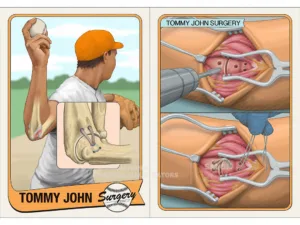 Tommy John surgery, formally known as ulnar collateral ligament (UCL) reconstruction, has become an essential procedure in Major League Baseball (MLB) and other levels of the sport when it comes to Elbow Injury Research. This surgery, named after Tommy John, the first baseball pitcher to undergo the procedure in 1974, addresses UCL tears, which are particularly common among pitchers due to the repetitive stress of throwing. The surgery involves replacing the damaged ligament with a tendon from another part of the patient's body or a donor. Over the years, Tommy John surgery has become a standard and often necessary intervention for pitchers aiming to extend their careers despite severe elbow injuries.
Tommy John surgery, formally known as ulnar collateral ligament (UCL) reconstruction, has become an essential procedure in Major League Baseball (MLB) and other levels of the sport when it comes to Elbow Injury Research. This surgery, named after Tommy John, the first baseball pitcher to undergo the procedure in 1974, addresses UCL tears, which are particularly common among pitchers due to the repetitive stress of throwing. The surgery involves replacing the damaged ligament with a tendon from another part of the patient's body or a donor. Over the years, Tommy John surgery has become a standard and often necessary intervention for pitchers aiming to extend their careers despite severe elbow injuries.
This article explores various aspects of Tommy John surgery, including its financial implications, strategies for prevention, and the biomechanics involved. It also highlights personal stories of players who have undergone the procedure, offering insights into their recovery journeys and return to the sport. By examining these elements, we aim to provide a comprehensive overview of Tommy John surgery's impact on baseball, from the significant costs incurred by MLB teams to the evolving understanding of injury prevention and rehabilitation. Through this exploration, we seek to shed light on the ongoing efforts to mitigate the risks associated with UCL injuries and enhance the longevity and performance of pitchers at all levels of the game.
The Financial Impact of Tommy John Surgery: Elbow Injury Research
 Cost Analysis for Major League Baseball Teams: Elbow Injury Research
Cost Analysis for Major League Baseball Teams: Elbow Injury Research
Tommy John surgery, while critical for the recovery and career longevity of MLB pitchers, carries substantial financial burdens for teams. According to a study by Meldau et al. published in Elsevier, the economic impact of UCL reconstruction on MLB teams is profound. Between 2004 and 2014, 194 MLB pitchers underwent Tommy John surgery, resulting in an average of 180.2 missed days per regular season for each pitcher. This significant downtime translates to a hefty financial loss. The total cost of recovery during this period was estimated at $395 million, averaging $1.9 million per player. Starting pitchers, who are pivotal to a team's success, represented the largest portion of these costs, totaling $239.6 million. On a per-player basis, however, closers incurred the highest economic loss at $3.9 million each, highlighting the severe financial impact on teams relying on these key players.
Preventing Tommy John Surgery: Elbow Injury Research
 Identifying Trends in Pitch Selection, Velocity, and Spin Rate: Elbow Injury Research
Identifying Trends in Pitch Selection, Velocity, and Spin Rate: Elbow Injury Research
Preventing UCL injuries and subsequent Tommy John surgeries is of paramount importance to reduce both health risks for players and financial losses for teams. A study by Mayo et al., published in SAGE Journals, explored potential predictive indicators for UCL injuries by examining changes in pitch selection, velocity, and spin rate. This retrospective analysis focused on MLB pitchers who underwent UCL reconstruction, analyzing their game-by-game performance leading up to their surgeries. The study identified significant trends, such as a decrease in pitch velocity for 4-seam fastballs, 2-seam fastballs, and sliders, which were closely associated with the approaching injury. Additionally, there was a notable positive correlation in the spin rate for cutters and a negative correlation for 4-seam fastballs. These findings suggest that monitoring these metrics could serve as an early warning system, enabling interventions that might prevent the injury and the subsequent need for Tommy John surgery.
Biomechanics and Tommy John Surgery: Elbow Injury Research
 Investigating Early Trunk Rotation (ETR)
Investigating Early Trunk Rotation (ETR)
Early Trunk Rotation (ETR) has emerged as a significant biomechanical factor that may contribute to UCL injuries in baseball pitchers. The investigation into ETR's impact on upper extremity injuries, spearheaded by Jacob Fried, underscores the potential importance of this movement in the context of UCL stress and subsequent injuries. ETR refers to the premature rotation of the trunk during the pitching motion, which can increase the strain on the elbow joint and the UCL. Despite its potential significance, research on ETR and its direct correlation with UCL injuries is still in its infancy. The only study addressing this issue so far has notable flaws, indicating a need for more comprehensive and robust research to validate these initial findings. By understanding the role of ETR in UCL injuries, it may be possible to develop targeted interventions and training modifications to reduce the risk of these injuries among pitchers.
 A Qualitative Assessment of Return to Sport
A Qualitative Assessment of Return to Sport
Beyond just physical recovery, there are other factors that influence athletes' decisions to return to their sport after Tommy John surgery. Through semi-structured interviews with athletes who had undergone UCL reconstruction, Mehta et al. sought to understand these influencing factors in a qualitative study. The study identified four predominant themes: trust in the care team, innate drive and optimism, misconceptions about post-operative abilities, and lifestyle priorities. Trust in the surgical and rehabilitation team was crucial, as athletes needed to feel confident in the expertise and support provided by their medical professionals. The innate drive and optimism of athletes played a significant role in their determination to return to their sport. However, misconceptions about their post-operative capabilities often led to unrealistic expectations and could impact their mental health and recovery process. Finally, lifestyle priorities, such as age, career considerations, and personal life changes, also heavily influenced their decision-making process. Educating athletes on realistic outcomes and emphasizing the importance of trust in their care team are essential for successful recovery and return to sport.
Trends in Tommy John Surgery in Collegiate Baseball: Elbow Injury Research
 Short-Term Trends in Collegiate Baseball Players
Short-Term Trends in Collegiate Baseball Players
In a thorough study, Rothermich et al. examined the three-year trends in ulnar collateral ligament (UCL) surgeries among NCAA Division I baseball players. This comprehensive research, encompassing data from 25,587 player-years, shed light on the prevalence and timing of UCL injuries requiring surgical intervention. The findings highlighted a notable trend: UCL injuries were common among collegiate baseball players, with pitchers being the most affected group. Specifically, the majority of the players who underwent surgery were pitchers, underscoring the high-risk nature of this position due to the repetitive stress and intense mechanics of pitching.
The study also revealed significant insights into the timing of these injuries. A higher percentage of UCL surgeries were performed during the season compared to the preseason. This suggests that the regular season, with its rigorous schedule and high volume of pitches, presents a critical period where players are more susceptible to UCL injuries. The in-season prevalence of surgeries indicates that the cumulative stress of continuous play, combined with potential inadequate recovery times, significantly contributes to the risk of injury. These findings emphasize the importance of implementing effective injury prevention strategies and monitoring programs during the season to protect players' elbow health and reduce the incidence of UCL injuries.
Given these trends, coaching staff, athletic trainers, and medical professionals must focus on preventative measures throughout the season. This could include limiting pitch counts, ensuring proper rest periods, and utilizing biomechanical assessments to identify players at risk. By prioritizing these preventative strategies, the goal is to mitigate the risk of UCL injuries and decrease the need for surgical interventions, ultimately promoting the long-term health and performance of collegiate baseball players.
Attending a 3X Velocity Camp to Prevent Tommy John Surgery
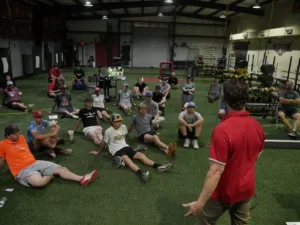 In the quest to prevent UCL injuries and avoid the need for Tommy John surgery, attending a 3X Velocity Camp can be a game-changer for pitchers. These camps, designed by TopVelocity, provide comprehensive training that focuses on enhancing pitching performance while prioritizing the health and longevity of athletes.
In the quest to prevent UCL injuries and avoid the need for Tommy John surgery, attending a 3X Velocity Camp can be a game-changer for pitchers. These camps, designed by TopVelocity, provide comprehensive training that focuses on enhancing pitching performance while prioritizing the health and longevity of athletes.
Comprehensive Biomechanical Training
The 3X Velocity Camp places a strong emphasis on biomechanical efficiency. Each athlete undergoes a detailed evaluation of their pitching mechanics using high-speed video analysis and other advanced tools. This assessment helps identify and correct any flaws or inefficiencies that could lead to injury. By refining their mechanics, pitchers can achieve higher velocity with less stress on their elbows, reducing the risk of UCL injuries.
 Strength and Conditioning
Strength and Conditioning
A critical component of the 3X Velocity Camp is its rigorous strength and conditioning program. The camp incorporates exercises specifically designed to target the muscles used in pitching, particularly those of the shoulder, arm, and core. These exercises help build strength, endurance, and flexibility, which are essential for maintaining proper pitching mechanics and withstanding the physical demands of pitching. A well-conditioned body can better handle the repetitive motions of pitching, helping to prevent overuse injuries that often lead to Tommy John surgery.
Injury Prevention Strategies
Injury prevention is a key focus at the 3X Velocity Camp. The program includes education on proper warm-up and cool-down routines, joint health maintenance, and flexibility techniques. Pitchers learn the importance of monitoring pitch counts and ensuring adequate rest and recovery between pitching sessions. Additionally, the camp emphasizes the role of nutrition and hydration in supporting overall health and performance. By adopting these injury prevention strategies, pitchers can significantly reduce their risk of UCL injuries.
Personalized Training Programs
Each athlete at the 3X Velocity Camp receives a personalized training program tailored to their specific needs and goals. This individualized approach ensures that pitchers focus on the areas most critical to their development and injury prevention. Continuous feedback and adjustments to the training plan help pitchers make optimal progress while minimizing the risk of injury.
Success Stories and Testimonials
Many athletes who have attended the 3X Velocity Camp report significant improvements in their pitching performance and overall health. Testimonials often highlight increased pitch velocity, improved mechanics, and a better understanding of how to maintain arm health. These success stories underscore the effectiveness of the camp’s comprehensive approach to training and injury prevention.
Conclusion
Incorporating the 3X Velocity Camp into a pitcher's training regimen offers a unique opportunity to enhance performance while reducing the risk of UCL injuries and the need for Tommy John surgery. The camp's focus on biomechanical efficiency, strength and conditioning, and comprehensive injury prevention strategies makes it an invaluable resource for pitchers striving to maintain their health and extend their careers. To take your pitching to the next level and protect your arm health, register for the 3X Velocity Camp today at topvelocity.net/3x-camp.
For more exclusive content visit TopVelocity Patreon!


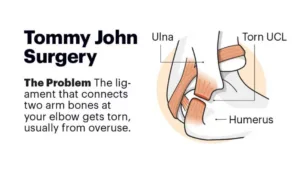 Cost Analysis for Major League Baseball Teams: Elbow Injury Research
Cost Analysis for Major League Baseball Teams: Elbow Injury Research Identifying Trends in Pitch Selection, Velocity, and Spin Rate: Elbow Injury Research
Identifying Trends in Pitch Selection, Velocity, and Spin Rate: Elbow Injury Research Investigating Early Trunk Rotation (ETR)
Investigating Early Trunk Rotation (ETR)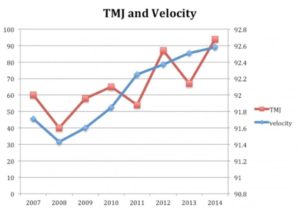 A Qualitative Assessment of Return to Sport
A Qualitative Assessment of Return to Sport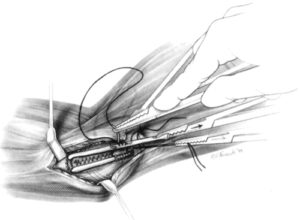 Short-Term Trends in Collegiate Baseball Players
Short-Term Trends in Collegiate Baseball Players Strength and Conditioning
Strength and Conditioning

